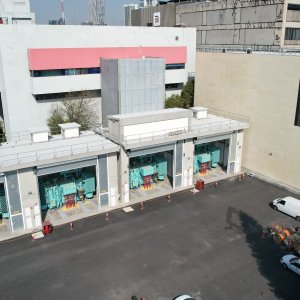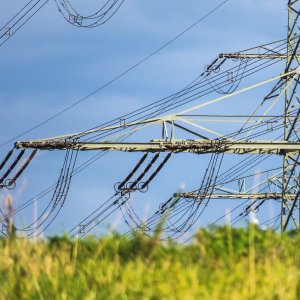Electricity Market Needs Transparent, Technically Justified Rules

STORY INLINE POST
Q: How did Bravos Energía enter the energy market, and what does it consider to be its main success?
A: We started three years ago as a group of individuals with a lot of experience in the Mexican power market, but without any capital to speak of. As such, we had to think of how to add value without the capability to invest in power plants or energy retail. And so, we decided to help owners of energy assets participate in the power market.
One of the main services we provide is helping plant owners and retailers with their daily operation in the energy market. Our other service is considered complimentary: market intelligence, consisting of forecasts and analysis of the market. We did not want to focus exclusively on either analysis or operations, but rather, combine them in order to provide a service that no one else can offer in Mexico. The company has grown quite a bit since we started. We have more than 15 clients for daily operations and countless analytical projects. We appreciate that our customers stay with us and recommend us to others.
Q: What trends are emerging regarding new generation assets?
A: Right now, the market is in an oversupply condition because demand has not grown in the past year and is not expected to grow in the immediate term. Even before COVID-19, economic growth had slowed down in Mexico. Another complication is the number of generation projects that were begun when demand was expected to grow. Approximately 7,000MW of renewable energy projects were contracted through CFE’s three clean energy auctions. The state utility had also contracted a couple thousand MWs of combined cycle generation, most of which arrived in the past year as well. Since the beginning of this year, market prices have been decreasing. I do not think that this will change in the short term, as there are still thousands of MWs under construction. Once the plants under development come online, construction of additional plants in the next few years will be limited to those that have extremely competitive costs, or those that are located in specific areas where there are capacity shortages: Baja California and Yucatan, for instance.
Q: How do you assess SENER’s recent policy, seemingly favoring its own power plants in the energy dispatch?
A: We have to distinguish the real policy from the opinions and theories that tend to make rounds in the energy industry. It has always been possible for combined cycle and thermoelectric generating plants to be dispatched first when they are needed for a reliability issue. While the minimization of costs must always be the objective function in the system dispatch, this minimization is always performed subject to the restriction that the reliability of the system must not suffer. As long as policies continue to dictate that economic optimization is a goal and that plants will only be dispatched out of economic order when actually needed, then there is not necessarily a problem to worry about. However, it is important to maintain transparency and to release documentation about how these decisions are made, in order to avoid unnecessary fears within the industry.
Industry observers are afraid that the government might try to apply a different dispatch policy, which would be inefficient and problematic. However, the evidence does not suggest that this has happened. We have analyzed the public information available on offers and economic dispatch, and at the moment it appears that in general the cleanest and cheapest power plants are being dispatched first Rather, the low prices that we have seen lately are explained by fundamental factors: excess capacity and lower fuel prices. Nonetheless, the sector has always wanted higher transparency from system operators. If the market receives an explanation as to which plants are being dispatched and why, it will have more confidence that prices are being calculated fairly.
As a corollary to transparency, it is important to establish clear and objective criteria for plant dispatching. This is because, even when everyone agrees on the underlying principle of “try to minimize costs, subject to reliability”, it is not possible to judge whether the principle is being followed if we do not have a precise definition of what exactly “reliability” means. How many MWs of spinning reserves do you need to add to the requirement when there are more renewables operating? What other ancillary services should be required, and how much of each is needed? How do we decide who provides them and how do we pay them? These questions and others have not been addressed to date, because with lower levels of renewable penetration it was assumed that sufficient ancillary services were available by default. As the system incorporates more renewables, we will need to establish specific rules regarding the quantity of ancillary services that must be provided, by who and at what cost. If we can establish transparent and technically justified rules, then disagreements will be reduced and there will be no need for paranoia about unfair or arbitrary requirements.
Q: What is your view on the private auction initiative?
A: The overall purpose of the auction is to solve two problems: first, developers have highly competitive projects available, but they cannot be financed until contracts have been established with offtakers, but often do not have the resources to locate and negotiate with the multiple counterparties that would be needed. Second, there are consumers that want to find a cheaper source of supply, but lack the capability to negotiate contracts with generators in a way that guarantees a competitive price. Auctions solve these problems by creating a critical mass of buyers and sellers that guarantees large volumes and competitive prices. They also provide added benefits for the market in general, such as increases in liquidity and more participation in the market. This adds confidence and attracts new participants.
When the pandemic arrived in Mexico, we knew we had to suspend the process because legal timelines for permitting processes were suspended, making it impossible for developers to commit to specific operational dates. We realized that it would not be a good idea to put a specific date on the calendar for the restarting of the process, since nobody knew how long it would take for permitting processes to start again. By the end of June, this was still the case: the country is primarily concerned with containing the health crisis and so it is difficult to predict when permitting activities might return to normal.
Once the administrative processes in the energy sector are restarted, we will survey our participants to make sure that they still need the same auction design as before. While we would prefer to minimize changes at this advanced stage of the process, various new situations have arisen that may require adjustments. For example, many generation developers are concerned about the regulatory environment. Besides dispatch issues, the feasibility of obtaining new interconnections has become an issue. On the other hand, we several power plants operating in the self-supply scheme have asked about participating in the auction because their wheeling rates have been raised dramatically. Other, non-self-supply operators have asked if they could join because they have realized they do not have the resources to pursue PPAs on a bilateral basis. We will re-assess the possibility of including these participants.
Q: What main goals would Bravos Energía like to achieve before the end of the year?
A: Of course, we would like to finish the auction and assign contracts. The overall goal is not to assign a specific number of contracts or MWs, but rather to fill a need in the market and do something valuable to help participants achieve their goals. For generators, that means anchoring their new projects. For consumers, it means providing access to cheaper energy.
Another goal is related to our analytics. We have been running zonal price forecast models for the last three years. They have been quite successful; we have been publishing our results and sending them to all of our customers on a weekly basis, as well as performing numerous custom studies for particular investment decisions. Nonetheless, we have always had the goal of building a nodal model. This has been requested by many customers, but it is highly complex and there are gaps in the available data; I do not think that anyone has been capable of doing this so far for the Mexican market. Therefore, our goal is to get our nodal model up and running this year.
Bravos Energía is a pioneer in the administration of generation assets and load centers in the Mexican Wholesale Electricity Market. The company uses its analytical capabilities to maximize value and control risks, allowing its clients to seize new market opportunities.








 By Cas Biekmann | Journalist and Industry Analyst -
Fri, 07/10/2020 - 12:19
By Cas Biekmann | Journalist and Industry Analyst -
Fri, 07/10/2020 - 12:19















